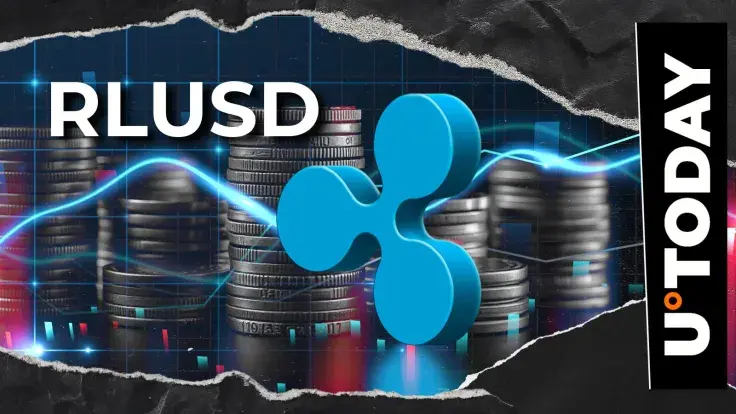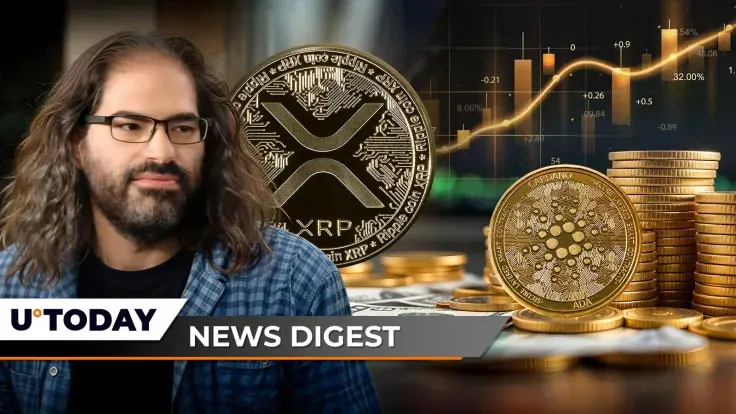Ripple Unleashes RLUSD Stablecoin: Africa Expansion & Aave Integration Signal Major Market Play

Aave Labs, the software technology company behind the Aave protocol, has recently launched a new institutional lending platform named "Horizon." This platform is specifically designed to bridge traditional finance (TradFi) with decentralized finance (DeFi) by enabling the use of tokenized products as collateral. These tokenized assets can include U.S. Treasuries, corporate bonds, and money-market funds, facilitated through partnerships with entities such as Superstate and Securitize. Horizon supports a range of digital assets from the outset, including Ripple's highly regulated RLUSD stablecoin, Circle's USDC, and Aave's native GHO. Additionally, initial collateral options available on the platform include Circle’s USYC yield fund and VanEck’s VBILL fund.
Ripple’s RLUSD stablecoin plays a crucial role in the Horizon platform, aimed at fostering "a new era of efficiency for on-chain finance." Reece Merrick, Ripple’s managing director for the Middle East and Africa, expressed satisfaction at RLUSD’s significant involvement in Horizon. The demand for RLUSD was notable when Aave first made it available for supply and borrowing in April, with $76 million worth of RLUSD being supplied within just one day. Jack McDonald, Senior Vice President of Stablecoins at Ripple, further highlighted the rapidly expanding stablecoin market in July, describing its growth as "exploding."
Ripple has actively managed the supply and expanded the global presence of its RLUSD stablecoin. Recent data indicates the minting of an additional 10 million RLUSD tokens, marking the first such event in September. This followed an earlier issuance of 15 million tokens on August 29. In total, 60 million tokens were minted by Ripple in August, predominantly on the Ethereum network. During the same period, 20 million RLUSD tokens were burned, resulting in a net increase of 40 million RLUSD tokens for August. According to CoinGecko data, the market capitalization of RLUSD currently stands at $711 million, having added over 200 million tokens in just over a month since surpassing $500 million in late July. Despite this rapid expansion, Ripple’s stated objective of reaching the top 5 stablecoins by the end of the year appears challenging for 2025. RLUSD would need to surpass PAX Gold (PAXG), with its $1 billion market cap, and PayPal’s PYUSD, which boasts nearly $1.2 billion, before needing to overcome six more stablecoins to break into the top five.
As part of its global strategy, Ripple has announced the expansion of RLUSD into Africa, securing partnerships with three major African players: the payments app Chipper Cash, cryptocurrency exchange VALR, and payments company Yellow Card. Africa represents a significant cryptocurrency hub, where local economies grapple with currency volatility, capital controls, and costly cross-border payments, making stablecoins particularly relevant. Reece Merrick from Ripple noted that the company had been anticipating this moment "for a while." Beyond these partnerships, RLUSD has also become available on various exchanges globally, including Bitso and CoinMENA, and recently obtained regulatory approval from the Dubai Financial Services Authority (DFSA). In Kenya, RLUSD is also finding innovative applications, gaining traction in pilot programs for drought and rainfall insurance.
In related news, Ripple’s Chief Technology Officer, David Schwartz, addressed recent speculation regarding a potential fork of the XRP Ledger. Schwartz explained that any public blockchain network can, in theory, fork if its participants disagree on fundamental rules, such as censorship. He clarified that unlike permissioned systems, those who oppose such changes in an open layer-one network are free to fork and establish their own version. Schwartz views forks primarily as fallback options rather than genuine opportunities for growth. While acknowledging that forks could theoretically offer benefits like increased throughput or specialized use cases, he underscored the market reality that capital and activity almost always consolidate towards the side deemed stronger, leaving the other chain marginalized. Schwartz concluded that "the market seems to want to pick the better side."
Meanwhile, the broader digital currency ecosystem is gradually recovering from earlier losses, with Cardano (ADA) currently in the spotlight. Trading at $0.8683, up by 0.95% in 24 hours according to CoinMarketCap data, ADA is approaching a significant technical event. Data from TradingView on the three-hour chart indicates that a "golden cross" is looming, as the 9-day Moving Average (MA) becomes entangled with the 26-day MA. For Cardano’s price to break this dormancy and achieve its short-term target of $0.90, it will require sustained buying momentum amidst ongoing bull-bear market dynamics.
Recommended Articles
Ripple's RLUSD Stablecoin Takes Over: Africa & Aave Embrace New Digital Dollar

Aave Labs has launched "Horizon," an institutional lending platform leveraging tokenized assets to bridge DeFi and TradF...
RLUSD Shakes Up DeFi: Becomes Key Collateral on Aave's Horizon Platform

Aave Labs has launched Horizon, a new institutional lending platform that integrates traditional and decentralized finan...
Ripple's RLUSD Stablecoin Charges Ahead: Africa Expansion & DeFi Integration Signals Major Play

Ripple is making significant waves with its RLUSD stablecoin, integrating it into Aave's new Horizon platform and expand...
RLUSD Dominates DeFi: Ripple's Stablecoin Becomes Key Collateral on Aave

Aave Labs introduces 'Horizon,' an institutional lending platform bridging TradFi and DeFi using tokenized assets and Ri...
Ripple Unleashes RLUSD: Stablecoin's Bold Leap into DeFi and African Markets

Ripple CTO David Schwartz recently discussed XRP Ledger forks, while the RLUSD stablecoin sees significant integration w...
You may also like...
Culture Shift at Nottingham Forest: Nuno Sacked, Ex-Australia Coach Set to Take Reins!

Nottingham Forest has dramatically shifted its managerial direction, sacking Nuno Espirito Santo, who led them to Europe...
Super Eagles' World Cup Dreams on the Line: Osimhen Injury, Mokoena Controversy Mar South Africa Showdown!

Nigeria's Super Eagles face a do-or-die World Cup qualifier against South Africa, complicated by star striker Victor Osi...
Emmy Glory: Creative Arts Awards Crown 'Severance,' 'The Penguin,' and 'SNL50' with Major Wins

The Creative Arts Emmy Awards celebrated outstanding achievements in television, with Apple TV+'s "The Studio" and HBO M...
Horror Sensation: 'The Conjuring: Last Rites' Unleashes Global Box Office Terror and Spine-Tingling Reviews

“The Conjuring: Last Rites” delivers a record-breaking global box office debut, cementing its place as the highest-gross...
African Music Crowns Its Best: Burna Boy, Davido Lead Star-Studded AFRIMA 2025 Nominations!

The 2025 All Africa Music Awards (AFRIMA) unveil a record-breaking nominations list, with Nigerian superstars Burna Boy ...
Blockbuster Showdown: 2025 MTV VMAs Reveals Performers, Presenters, and Shocking Winners List!

The 2025 MTV Video Music Awards, hosted by LL COOL J, celebrated music's biggest stars with Lady Gaga dominating the nig...
Oasis Reunion Chaos: Watchdog Threats, Line-Up Drama, and Escalating Feuds Plague Iconic Band's Return

Oasis is embarking on a highly anticipated reunion tour in 2025, with Andy Bell confirming his return to the band's line...
Explosive Allegations Rock Alexander Brothers: Accusers Detail Assaults as Lawyers Deny Claims

Luxury real estate moguls Oren, Alon, and Tal Alexander are accused by over 60 victims of rape and sexual assault, with ...